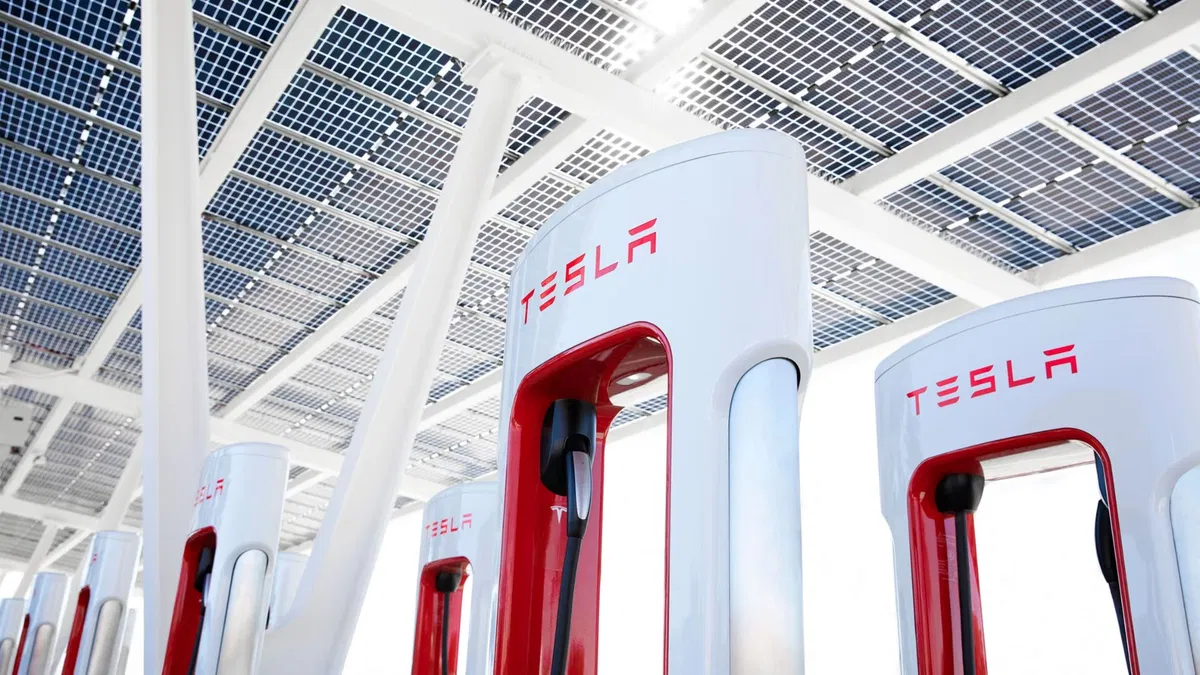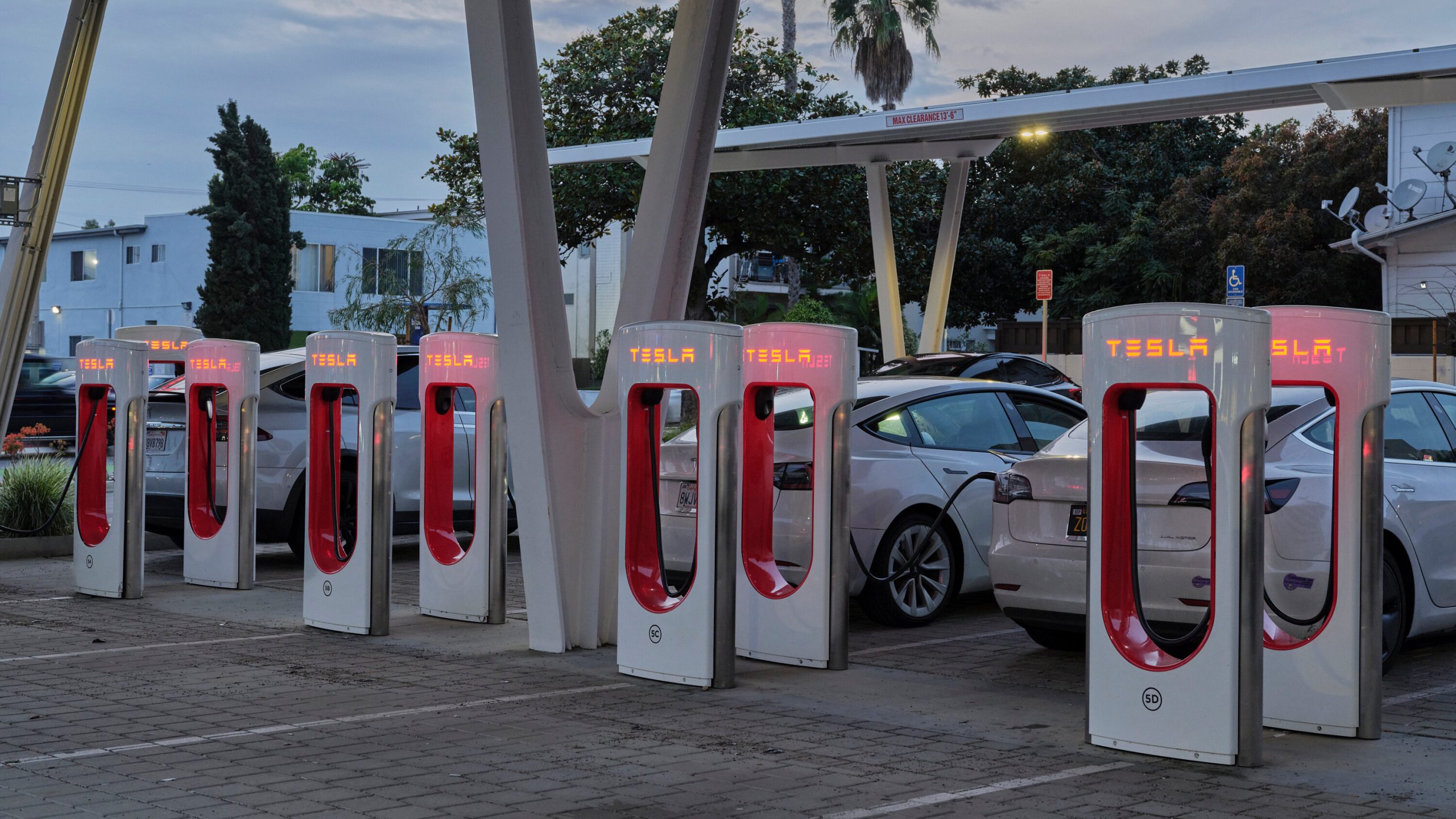Elon Musk surprised many people this week when he decided to let go of much of Tesla’s Supercharger team. This decision has raised concerns about the future of electric vehicle charging in the United States.
Several factors likely contributed to this unexpected move. Competition in the electric vehicle market is increasing, and the profit margins for charging may not be as attractive as before. Musk’s focus on developing robotaxis may have diverted attention away from expanding the Supercharger network.
Tesla’s Superchargers, which number around 58,000 worldwide, have become a standard for electric vehicle drivers globally. However, the impact of slowing down expansion will be felt most in North America. In this region, Tesla’s Superchargers make up a significant 74% of all ultra-fast chargers tracked by BloombergNEF.

Tesla has been the leader in installing ultra-fast chargers in North America. In the first quarter of this year alone, Tesla installed a record-breaking 3,680 Superchargers, while its competitors combined installed fewer than half that number.
However, Tesla’s decision to slow down expansion could hinder the United States’ electric vehicle goals. According to forecasts by BloombergNEF, North America needs about 400,000 ultra-fast chargers by 2030 to support a fleet of 40 million electric vehicles. This infrastructure would also lay the groundwork for over 90 million electric vehicles by 2035.
In contrast, Europe has seen significant growth in charging infrastructure from various companies. In the first quarter, more than 390 companies installed over 13,000 ultra-fast chargers, which was significantly more than Tesla’s installations. Musk may be betting that the charging industry in North America will evolve to resemble Europe’s, where multiple companies contribute to infrastructure growth.
Musk’s decision to scale back the Supercharger team reflects a strategic shift in Tesla’s priorities and highlights the evolving situation of electric vehicle charging infrastructure.

